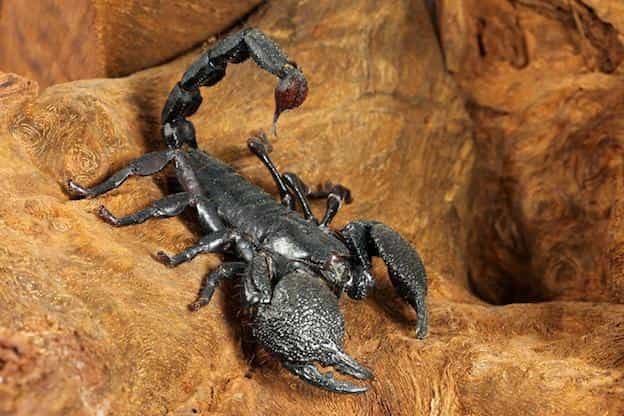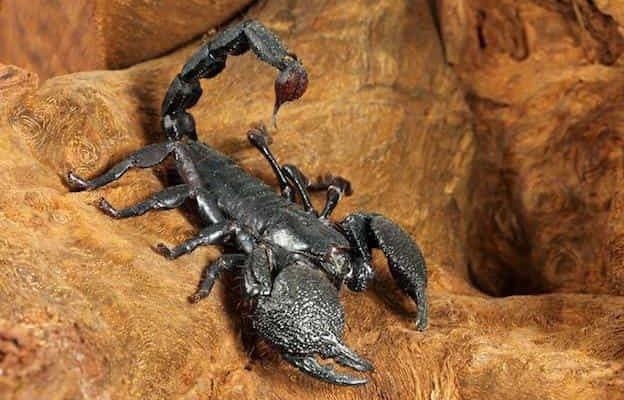
If you’re looking to identify an Emperor Scorpion, knowing what sets it apart from other scorpions is crucial. Think of it like spotting a celebrity in a crowd—they have distinct features that make them easier to recognize. So, let’s dive into the fascinating world of Emperor Scorpions, and I’ll guide you through identifying these stunning creatures with ease.
What Makes the Emperor Scorpion Unique?
The Emperor Scorpion, scientifically known as *Pandinus imperator*, is renowned for several distinctive features. First off, it’s one of the largest scorpion species, reaching lengths of up to 8 inches—almost the size of a small kitten! Their massive pincers, which resemble the powerful arms of a weightlifter, are another notable characteristic. These pincers are not just for show; they play a crucial role in catching prey and defending against threats.
Coloration is another key aspect of identifying this species. Generally, Emperor Scorpions have a glossy black or dark brown exoskeleton that shines under UV light. If you’ve ever seen a superhero with their gleaming suit, that’s the vibe! Their robust bodies and long tails, which end in a stinger, further add to their impressive look.
You might have heard that not all scorpions are dangerous, and you’d be right! Despite their intimidating appearance, Emperor Scorpions are relatively docile and can be a popular choice in the exotic pet trade. Understanding their unique traits is the first step to recognizing them in the wild or in captivity.
Identifying Physical Characteristics
To really recognize an Emperor Scorpion, let’s break down its features.
Body Size
– As I mentioned, Emperor Scorpions can grow quite large, often reaching about 6 to 8 inches in length.
Pincer Size
– Their pincers are noticeably thick and meaty. If you see a scorpion with chunky claws, it could very well be an Emperor Scorpion.
Color and Shine
– Look for that glossy, dark exterior. When exposed to UV light, these scorpions emit a beautiful blue glow, adding to their uniqueness.
One way to put it is that spotting an Emperor Scorpion is like finding a rare gem—you know it when you see it, thanks to its standout traits. Their robust body and size make them difficult to confuse with other species, so if you keep these features in mind, you’ll easily identify one.
Understanding Their Habitat
You might be wondering where Emperor Scorpions call home. These creatures primarily inhabit the tropical rainforests of West Africa. Their preference for humid environments means they can often be found under rocks, in crevices, and beneath leaf litter.
This habitat not only provides them shelter but also the moisture they need to thrive. Much like how you’d hide from the sun under a shady tree, Emperor Scorpions seek out damp areas that keep them cool and comfortable.
In captivity, it’s essential to replicate their natural habitat as closely as possible. Providing a substrate that holds moisture, along with hiding spots, helps keep these scorpions happy and healthy. When identifying them, remember: if you come across a large scorpion in a rainforest-like setting, there’s a decent chance it could be an Emperor Scorpion.
Behavioral Traits: What to Look For
Behavior can also help you identify an Emperor Scorpion. Unlike more aggressive scorpion species, these guys are typically docile. You know how some people are just more laid back at parties? That’s them!
During the day, Emperor Scorpions like to rest and stay hidden, but they come out at night, showcasing their nocturnal nature. If you observe one moving slowly, it’s likely feeling safe and secure. Their slow movements can be mesmerizing, almost like they’re dancing to a silent tune.
Another behavior to consider is their unique way of hunting. They rely heavily on their sense of touch and vibration rather than vision. When the time comes to hunt, they use their pincers to grasp their prey firmly. If you happen to see one using its pincers to hold onto something, it’s a classic sign of an Emperor Scorpion at work.
Common Misidentifications
When trying to spot an Emperor Scorpion, it’s easy to mix them up with similar species. One common contender is the *Hadrurus arizonensis*, also known as the Arizona bark scorpion. It’s smaller, with longer legs and a slender body, making it quite different from the stocky Emperor Scorpion.
Another species to watch out for is the *Androctonus australis*, also known as the fat-tailed scorpion. This one can be very dangerous, as it’s venomous and aggressive! So, always exercise caution—being able to tell these apart can be lifesaving.
Look for size and pincers as distinguishing features. If you see a large, thick-clawed scorpion, it’s likely an Emperor. However, if it’s smaller and dangerously slender, you might be looking at something more hazardous.
Where to See Emperor Scorpions
If you’re excited about seeing these creatures in person, there are a few places you can check out! Many zoos and aquariums feature Emperor Scorpions in their exotic animal exhibits. It’s a fantastic opportunity to observe their unique behaviors and physical traits up close.
Additionally, some reptile shows or exotic pet expos often have breeders and enthusiasts displaying these amazing creatures. This can be a great chance to learn more about them, ask questions, and even see how they are cared for.
And if you’re really adventurous, you might consider taking a trip to West Africa! While it’s more challenging to spot them in the wild due to their habitat preferences, guided tours can offer a glimpse into their natural environment.
Final Thoughts on Identifying Emperor Scorpions
Identifying an Emperor Scorpion can be as thrilling as discovering a hidden treasure. With their impressive size, striking appearance, and unique behaviors, these creatures stand out from the crowd, or should I say, from the desert sand?
Remember, look for the thick pincers, their glossy black bodies, and their docile nature. Understanding their habitat and behaviors can lead you to a successful identification. If you ever find yourself in the company of one, whether at a zoo or in the wild, you’ll know exactly what you’re looking at.
So, next time someone mentions Emperor Scorpions, or you stumble upon one in your adventures, you can confidently say, “Oh, I know exactly what that is!” Knowing how to identify these amazing creatures not only adds to your knowledge but also enriches your experiences in the wonders of the animal kingdom.

